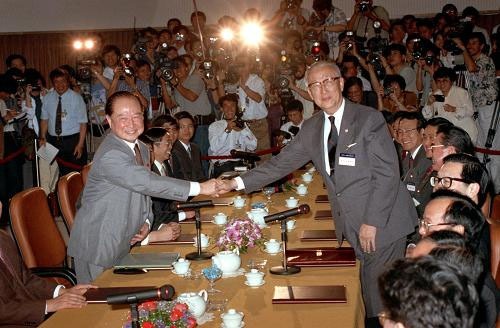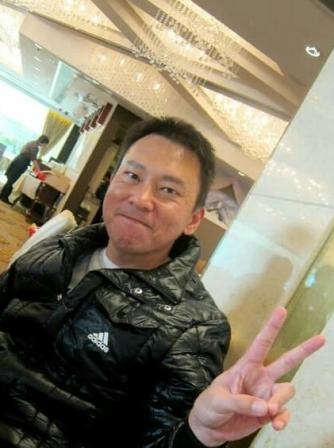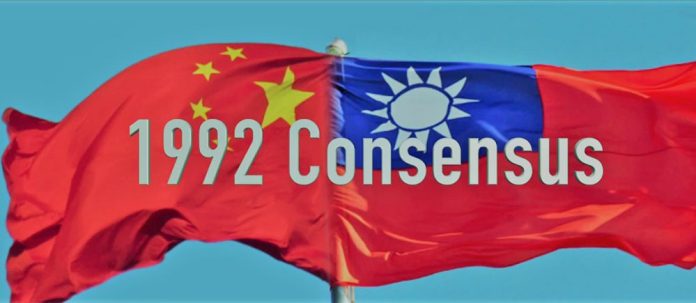Burkina Faso announced on the 24th May 2018, that it would drop diplomatic ties with the Republic of China (Taiwan) and become the latest country to build a relationship with the People’s Republic of China (Beijing). The decision by Burkina Faso means Taiwan is now recognized as a sovereign country by only 18 mainly small and developing nations. This is also the second diplomatic relationship Taiwan lost within the month of May and the fourth for President Tsai Ing-wen since her presidential inauguration 2 years ago. The Dominican Republic announced it would end its 77 years of friendship with Taiwan early this month. The break by Burkina Faso reignited fears that the 18 countries still allied with Taiwan will switch to Beijing. Tsai furiously declared that she would not back down from the pressure exerted by the cross-strait neighbor.
The loss of 4 allies and the earlier M503 Route dispute have stirred up interests in the relationship between Beijing and Taiwan. Many have asked why mainland China has been exerting so much pressure on Taiwan, as what Tsai Ing-Wen has been claiming. Indeed, days have felt like years to Tsai since her Presidential inauguration on the 20th May 2016.
Obviously, the refusal to recognize the 1992 Consensus is the main cause of the Tsai’s plights. So, what is the 1992 Consensus? The 1992 Consensus was the result of a meeting in British Hong Kong between mainland China-based Association for Relations Across the Taiwan Strait(ARATS) headed by Wang Daohan, and the Taiwan-based Straits Exchange Foundation (SEF) in November 1992, led by Koo Chen-fu. On the 1st August 1992(3 months before the meeting), the Republic of China (ROC) published the following statement with regards to “One China”:
Both sides of the strait uphold the principle of one China, but the connotation given by both sides is different. The Chinese authorities consider that one China is the People’s Republic of China. After unification in the future, Taiwan will become a special administrative region under its jurisdiction. Taiwan believes that one China should refer to the ROC which has so far been established in 1912 and its sovereignty over the whole of China. However, the current power of control only covers that of Taiwan, Penghu, Kinmen and Matsu. Taiwan is a part of China, but the mainland is also part of China.
On 3rd November 1992, SEF informed ARATS of the oral expression about “one-China” it tabled being approved by the relevant leading department in Taiwan. ARATS agreed to the SEF’s suggestion of stating the “one-China” attitude based on their respective oral explanations in a letter sent to the SEF on 16th November 1992, but emphasizing both sides of the Straits persist in the “one-China” principle and work hard to pursue reunification, without talking about the political meaning of one China in negotiations of affairs concerning both sides of the Straits. The SEF showed no disagreement in its letter of reply to ARATS on Dec. 3.
This was known as the 1992 Consensus (Consensus).

Although the Consensus was suggested and confirmed by both sides of the strait, it was Taiwan that was very inconsistent with the recognition. First, the Consensus was achieved during President Lee Teng Hui’s Administration, Lee changed his stance in 1995, and began toying with the “Two Country Theory”. Then, President Chen Shui Bian during his 2nd term came up with “Two Different Countries separated by the Taiwan Strait”. It was President Ma Ying-jeou, President of the Republic of China from 2008 -2016, that returned to the spirit of the Consensus. It was during these 8 years of peace that finally saw the direct flights between the 2 sides. Interactions, trades and tourism exploded by leaps and bounds. However, it was also during the peaceful 8 years that the least the Taiwanese felt being Chinese, especially the younger generations. Lee Teng Hui and Chen Shui Brian’s whitewashing of Taiwanese history to reduce the weight of their Chinese heritage started to take effect during the Ma Administration.
Tsai Ing-wen in 2016 pledged that she would keep the status quo of Ma Administration. Many had questioned her about the Consensus, after all, when she was in the Lee Administration, she did say she recognized the Consensus. During her inauguration, she gave a well-scripted speech on how she would pull together Taiwanese from both the Pan-Green and Blue factions. She announced that she would relaunch the “Go South” Policy which was a policy invented by Lee Teng Hui, picked up again by Chen Shui Bian. However, of all things, Tsai did not and would not recognize the Consensus.
To Beijing, the refusal to recognize the Consensus is a change in the status quo. Beijing warned her about the consequences of a change in the status quo, and President Xi Jinping even openly warned that without the Consensus, the ground under the feet would “tremble and crumble”. Indeed, Tsai not only discarded the Consensus, her administration also systematically removed all things Chinese, short of changing the name of the Republic of China to the Republic of Taiwan. For eg, the Zhongguo Kuomintang (KMT of China) party’s assets have been confiscated based on a controversial law that is unconstitutional, Chiang Kai Shek’s statues were disfigured and removed, and the Tsai Administration stops celebrating Sun Yat Sen’s birthday etc.
The Tsai Administration, her Democratic Progressive Party (DPP) comrades and members of the Washington-based Taiwan advocacy group Formosan Assn. for Public Affairs also worked hard lobbying for and got further unofficial ties like the Taiwan Travel Act. US President Donald Trump also “signed into law the National Defense Authorization Act for the 2018 fiscal year, which authorizes the possibility of mutual visits by navy vessels between Taiwan and the United States.” In a way, Tsai was right to claim that she was not a pawn but a player, and Trump was her pawn.
All these unilateral changes in the status quo and the escalation of the animosity include regular military drills by the PLA air and naval forces.
While Tsai held a press conference to denounce Beijing’s bullying, Taiwanese aren’t buying it. More and more Taiwanese students are leaving the island to further their studies in mainland China. This year alone, the number of students applying for top Chinese universities like Beijing University, Tsinghua University and Fudan University etc, have increased by 6 fold.

Eighty-Six percent Taiwanese population believe that they are ethnically Chinese, 62% of them think that a peaceful unification is beneficial for Taiwan. This is a major contrast with what the DPP government has been telling the world. Sensing that the new Taiwanese consensus is a closer tie with Beijing, KMT’s new chairman, Wu Den-yih announced on 22nd May 2018 that KMT’s position is to return to the ROC constitution of a unification with the mainland. This announcement came at a time when Tsai’s approval rating is at an all-time low, and the Beijing approval rating is at an all-time high. Wu and the KMT know that for the good of Taiwan, a peaceful unification is the only path to take. Unification will be too tough for pro-independence Tsai and DPP to match, but will they have the political courage to return to the 1992 Consensus so that Taiwanese will again enjoy a peaceful cross-strait relationship? It looks like Tsai and the DPP have no other choice.

Joseph graduated with a degree in Business Administration from the National University of Singapore and is a CFA and CAIA charterholder. He enjoys geopolitics and study international politics extensively. Joseph currently lives in Hong Kong.


